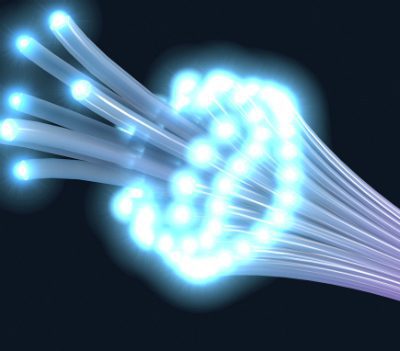The A/V industry has spent decades using copper cables. From coax to s-video to HDMI, fixed-length copper cables have been cheap and easy. You just plug them in and they work. So why complicate things with fiber?
Technically, fiber-optic technology has the following advantages over copper transmission:
- Performance (data rate over distance): As data rates increase, physics imposes a limit on the distance that copper cables can transmit high-speed signals without being overwhelmed by errors. Using a baseline distance of 100 feet, optical technologies can transmit more than 100 times the data that copper cabling can transmit.
- Aesthetics (thin, light, unobtrusive cabling): Optical cables are typically 50 percent of the width and a fraction of the weight of high-end copper cables. With some types of fiber, the width can be 10 percent of a copper cable and the jacket can be translucent, which means the fiber is nearly invisible.
- Immunity to Electromagnetic Interference (EMI): Electrical signals over copper can be disrupted by other electronic systems or even other channels within the same cable. Light waves over fiber are immune to this type of interference.
- Security: Information moved over fiber is very difficult to “snoop” versus data moved over copper.
The primary driver for transitioning from copper to optical technology has been performance, but keep an eye on these other advantages. As the market matures, we may find opportunities to do things that were simply unthinkable when we were limited to copper cables.
Why Now?
Fiber-optic technology has been around for 50+ years, so what’s changed? When 4K was first introduced it included only the higher resolution, not all the other features that make up the complete standard. This is similar to when we used to call 480p “High Definition” video.
Just as HD eventually became 1080p, the term 4K is coming to mean “fully featured” 4K. Fully featured 4K required 18Gbps and this has caused considerable angst in our industry because it forces hard changes upon us.
The datacom industry went through a similar transition from copper to optical 20 years ago when datacenters first began demanding 10Gbps links over unsustainable distances.

The A/V industry is also at a point of no return. If 4K seems like a hard transition, imagine how difficult 8K video will be with its 48Gbps of required bandwidth.
Kjersti Martino has a PhD in Electrical Engineering with a focus on electro-optical devices. She worked from 2008-17 at Zephyr Photonics, a supplier of lasers, photodetectors and optical solutions to the aerospace industry, and is currently a Product Manager at Inneos.







